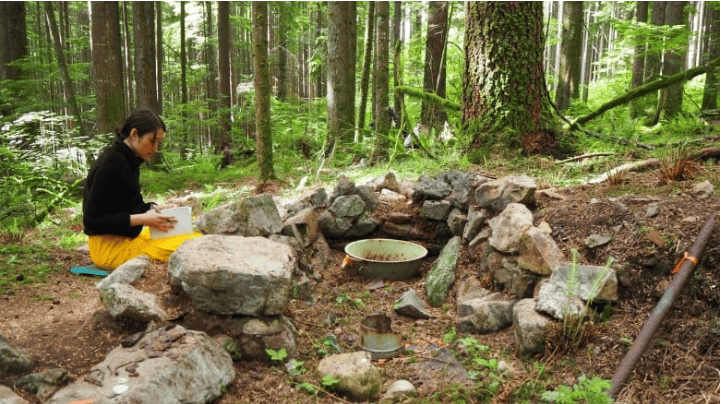
While the North Shore mountains look like pristine wilderness, they have a rich history of urban life
The forests of the North Shore mountains may look like a pristine, preserved landscape, but for almost 15 years, archeologist and Capilano University instructor Bob Muckle has studied the area as a site of urban living.
Every summer, Muckle and a team of students have headed there to explore, excavate and reveal the area’s history. That project is wrapping up this year.
“There was a lot of residential activity which hardly anybody knows about because in the 1930s the Greater Vancouver Water District decided we better not allow people up here because it’s so close to the water supply,” Muckle told host Gloria Mackarenko on CBC’s On The Coast.
He said the Greater Vancouver Water District started buying up private properties — restaurants, ranches, orchards, stores — and burned them down. Then they decided to shut down the valley for almost 40 years, letting the forest take over.

“It’s called the Lower Seymour Conservation Reserve [now] and a lot of people think it’s to preserve the forest, but really that forest is all second growth and there’s a lot of residential activity and commercial activity that has just been hidden by the forest,” he said.
One of Muckle’s most fascinating finds was evidence of three different Japanese settlements in the area.
Muckle’s team found evidence of 14 small houses, as well as a constructed bath house, a small shrine, a garden, and a water storage reservoir.

The team also uncovered personal objects like time pieces, pocket watches, and alarm clocks, as well as clothing, leather boots, and hundreds of fragments of Japanese dishes.
Muckle says the good condition of some of the items found supports his hypothesis that the site was occupied until 1942.

“February 1942 was the time at which people of Japanese descent were sent to relocation camps for World War Two, and they were essentially [only] able to take whatever they could carry,” he said.
“They just essentially closed the door behind them and left.”

Now that the project is wrapping up, Muckle’s collection will be shared between Nikkei National Museum in Burnaby (a museum that focuses on Japanese-Canadian history), the North Vancouver museum and archives, and Metro Vancouver (which legally own the artifacts).
“[There are] well over 1,000 artifacts just from this one site and [we’re] essentially letting them choose which ones they’d like to add to their own collections,” said Muckle.


